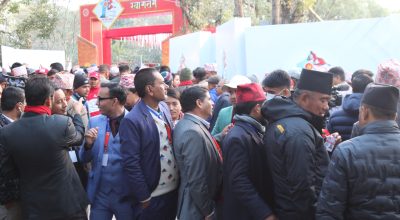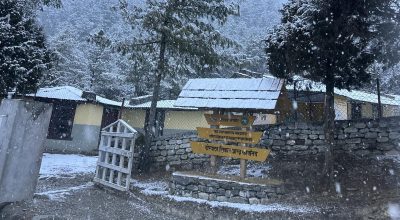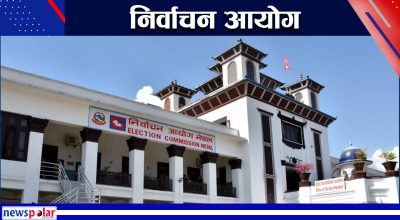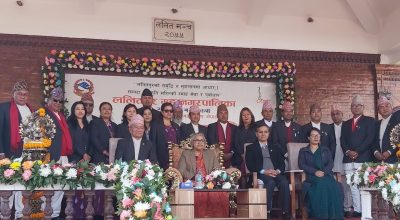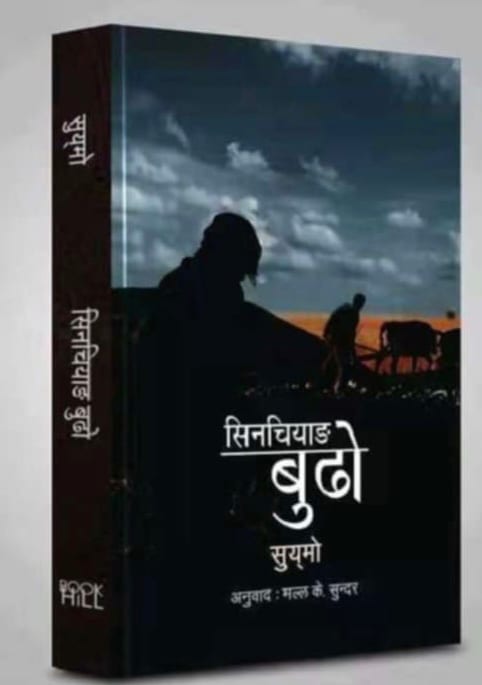
Mahendra Subedi
Kathmandu, Dec 9: Despite being an immediate neighbour, the literary books by Chinese writers until the recent past were limited available in Nepal; but Lu Xun was an exception among a political circle. In the past one decade, Mo Yan’s writings too made inroads in the Nepali literary market after he won the Nobel Prize in 2012. Lately, Chinese non-fictions, mostly about economy and politics, have dominated the list of Chinese texts in Nepal. But Nepali readers and the enthusiasts of Chinese literature now have little more choices about the Chinese literature and writings. One of the widely read Chinese writers is Xue Mo who writes the poignant short stories and depicts the portrayal of Chinese common people mostly from the nation’s western belt who have a similar lifestyle to that of Nepal’s hilly residents.
A book named ‘Xinjiang Budho’ by Xue Mo which is the translation of ‘The Old Man Xinjiang’ is the compilation of short stories sharing the life, people, culture, marriage, education, economic and social harmony and challenges of western part of China and its surroundings: mostly from the desert areas. The book translated by Malla K. Sundar into the Nepali language is a window to look at the Chinese society through literary lens, which offers a broad understanding of the society there including its sufferings and progress; challenges and prospects; images and reality, and other socioeconomic and political dichotomies.
One of the stories in the book is the Old Man Xinjiang that revolves around the hardships in the life of an elderly man in rural China. Such a harsh life of the old man is rooted in poverty and social isolation, but the writer shows that the life goes there due to generosity. The old man in the story is a central character who bears the traditional values and true images of Xinjiang people. Through vivid descriptions, Xue Mo paints a stark picture of the socio-economic disparities exacerbated by political vicissitudes.
The story of the Old Man Xinjiang, the first story of the book, talks about the pathetic condition of a poor man who is doomed to accept the pangs of family disintegration caused due to the man’s migration that he chose to avoid the family poverty. The story is also about capturing the social realities of fatalism, which is a major and unavoidable element of the social fabric. It talks about family, men’s powerful stake in society, agriculture, food systems, social transition, the dichotomy of good and evil and advancement and status quo.
In his writing in the story Beauty, Xue Mo’s writing has an impression of American novelist and short story writer Nathaniel Hawthorne, whose literary works often focus on morality and religious values. In this story The Beauty, Xue Mo narrates the plot of a woman named Yuye and the entire conflict is centered on a woman, who is infected with a sexual disease and her parents are obliged to pay 10,000 Yuan to her husband and his family in compensation. And the woman is sent to her parental house as she was infected and was not accepted by the husband’s family. Yuye was admitted to the hospital for her treatment but there was no effect of the medical treatment, which shows that a poor family goes to further poverty due to expensive medical services.
In this story which is about a couple, the reader could enjoy it as it could be compared with a true depiction of a typical Nepali context and this also shares some cultural similarities of Dulhan of the newly-wedded couple. The story is about a newly wedded couple and the syphilis infection of the groom and the shock of the newly-wedded husband. In this story, the writer in a conscious way talks about modernity and scientific advancement, in the field of medical science. But at the same time, the writer expresses his critical views on expensive health care services and treatment facilities. As the story is about the modern medical system, the writer also shows the existing practices that people with conservative mindsets believe in religious gurus. The story, which is woven to show the complete sufferings of a common family, is linked between marriage, disease and divorce, and shows how a man takes divorce as a common phenomenon.
At one point, the writer compares that living a life with a partner having STDs is like drinking polluted water and offers the image of sewage to a worse life. However, he shows a contrasting story on the side of the girl’s parents as they are happy and enjoy a great sigh of relief after marrying their daughter to a gentleman. Likewise, the use of a thundering cloud to show the family breakup is interesting and makes the story more intense.
The story “That Night’ in the book is about the harsh life of poor people in the aftermath of famine in rural areas and the deaths caused due to the famine. The story is filled with symbols of war, disasters, wild animals and the stink coming from the carcass, prostitution and deserted villages. This story in a subtle way shares the descriptions similar to that of the deadly famine China witnessed in the 1960s in which millions of people were reported to have died.
Xue Mo shares the Chinese people’s struggles and suffering caused due to the great famine that occurred during the 1960s and describes how the people there survived amid hardships. In this context, the book could be interpreted as a window to understand the history of Chinese society which was very bleak and heart-wrenching due to several factors including external forces’ invasion and internal upheavals.
In his stories, writer Xue Mo seems much conscious about his social obligations too. In several contexts, the writer provides strong messages to the society against human trafficking and cautions the society to the rising level of greed mostly in the city. In his writing, Xue Mo draws a border line between the city and rural while comparing the city as a confluence of cunning and shrewd people with petty interests. At one point, he states that people are lost with lust and can do anything for money and sex which leads to the tragic end of an individual. While doing so, he exposes social follies and greed — the strong tools of power in the so-called modern society. At the same time, the writer mentions the literally empty villages after the rural people’s migration to the cities. Most of his stories are about love, relations, sex, social decency, harmony, farming, agriculture and the struggle of young people.
In many cases, the literal translation makes the story loose, unwoven and creates a detachment of the story. The Nepali text would have been far better had the translator considered that translating the literary text also demands a trans-creation of literary nuances as well as the localization of the cultures.
However, on the part of writings, Xue Mo seems to be a puritan and wants his character to follow suit. Overall, the writings of Xue Mo in this collection are more or less relevant to the Nepali society as the writer’s perception towards farming, dowry system, conservative perception and social hypocrisies are very much similar to the Nepali context. The most fascinating part of the stories is that they carry the common people’s stories and the selection of the characters is apt. The stories of Xue Mo offer strong messages to society to be economic and practical, which he draws based on his time’s psychology. #RSS #nepal #XueMo





